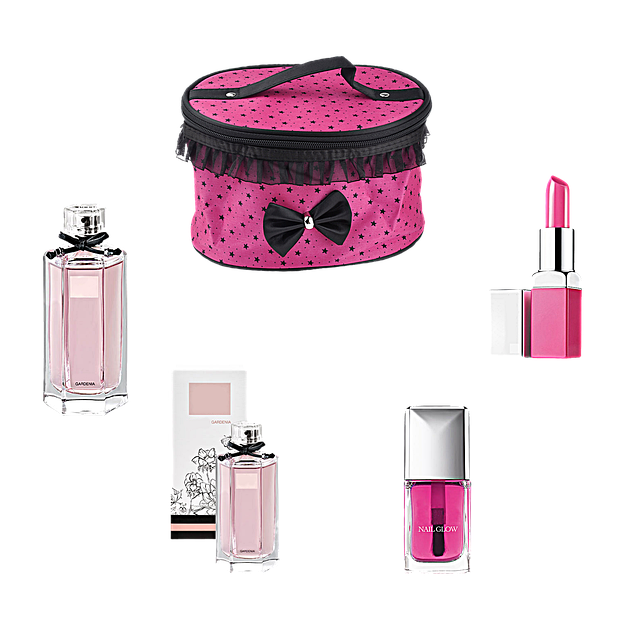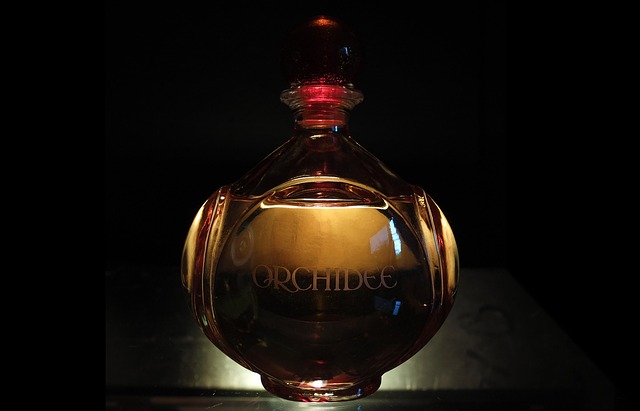Personal scent preferences vary widely due to sensory experiences and cultural backgrounds. Clean pe…….
Category: Clean Perfume Cologne
Clean Perfume Cologne: A Comprehensive Overview
Introduction
In the realm of fragrance, a quiet revolution has been taking place—one that revolves around the concept of “Clean Perfume Cologne.” This emerging trend transcends traditional olfactory experiences, offering a fresh, minimalist approach to personal care and grooming. In this article, we embark on a journey through the intricate world of clean colognes, exploring their definition, global impact, economic significance, technological innovations, regulatory landscape, challenges, and the inspiring case studies that shape its future. By delving into these aspects, we aim to provide an insightful guide for both industry professionals and enthusiasts curious about this aromatic phenomenon.
Understanding Clean Perfume Cologne: Definition and Core Components
Clean Perfume Cologne represents a modern interpretation of fragrance, characterized by its use of non-toxic, environmentally conscious ingredients, and a focus on simplicity and naturalness. It is more than just a scent; it’s a movement towards sustainable and healthy personal care practices. At its heart, clean cologne emphasizes the following key components:
- Natural Ingredients: These include essential oils derived from plants, flowers, fruits, and spices. Natural ingredients not only provide a unique olfactory experience but also offer potential therapeutic benefits.
- Free from Harmful Chemicals: Clean colognes steer clear of synthetic fragrances, parabens, phthalates, and other controversial chemicals often found in conventional perfumes. These substances have been linked to various health and environmental concerns.
- Minimalist Design: The packaging and presentation reflect a refined, uncluttered aesthetic, aligning with the simplicity of the fragrance itself.
- Sustainability: Many brands adopting this approach prioritize eco-friendly practices, using recyclable materials and supporting sustainable sourcing of ingredients.
Historically, colognes have evolved from ancient civilizations’ use of aromatic herbs and spices to the sophisticated art of perfumery in Europe during the Renaissance. However, the clean fragrance movement emerged more recently as a response to growing consumer awareness about the potential dangers of conventional cosmetics.
Global Impact and Trends
The concept of clean cologne has captivated consumers worldwide, leading to several significant trends:
- Regional Popularity: While it originated in Western markets, clean perfume Cologne has gained traction globally. Countries like Japan, South Korea, and Australia have embraced the movement, with a surge in demand for natural, organic personal care products.
- Online Market Dominance: The rise of e-commerce platforms has played a pivotal role in popularizing clean colognes. Brands can now reach a global audience, allowing consumers to explore and discover new scents easily.
- Influencer Adoption: Many lifestyle and beauty influencers have embraced the clean fragrance trend, sharing their experiences and reviews with millions of followers, further driving its popularity.
- Regional Variations: Different regions are witnessing unique interpretations of clean cologne. For instance, Japanese brands often blend traditional Eastern aromatics with modern techniques, while European creators emphasize natural, locally sourced ingredients.
Economic Considerations
The economic landscape surrounding clean perfume Cologne is dynamic and multifaceted:
- Market Size and Growth: The global organic personal care market, which includes clean colognes, is projected to reach USD 34.6 billion by 2027, growing at a CAGR of 11.5% from 2020 to 2027 (Source: Grand View Research). This rapid growth indicates a significant shift in consumer preferences towards natural alternatives.
- Investment Opportunities: The clean beauty movement has attracted substantial investments from venture capitalists and cosmetic giants. Many startups offering clean colognes and skincare have secured funding, recognizing the market potential.
- Retail Channel Shifts: Traditional retail outlets are adapting to meet the demand for clean products. Department stores and specialty retailers are dedicating sections to organic and natural personal care items, including colognes.
- Price Points: Clean colognes often reflect premium pricing due to the higher cost of natural ingredients and stringent production processes. However, some brands offer affordable options, making sustainable fragrance accessible to a wider audience.
Technological Advancements
Technology plays a crucial role in enhancing the clean perfume Cologne experience:
- Customized Fragrance Creation: With advancements in perfumery science, consumers can now design their unique colognes by combining different natural notes. Apps and online platforms allow users to create personalized scents, catering to individual preferences.
- Sustainable Packaging Solutions: Innovation in packaging materials has led to the development of biodegradable and recyclable containers. Some brands use glass bottles with minimal packaging, reflecting their commitment to sustainability.
- Digital Marketing and AR Technology: Augmented reality (AR) is revolutionizing fragrance retail. Customers can virtually try on different colognes, enhancing the online shopping experience. Digital marketing campaigns also leverage social media and influencer partnerships to reach a broader audience.
- Ingredient Sourcing and Tracking: Blockchain technology ensures transparency in ingredient sourcing, allowing consumers to trace the origin of natural extracts used in clean colognes. This enhances brand credibility and fosters consumer trust.
Policy and Regulation
The regulatory environment surrounding clean perfume Cologne is essential for ensuring product safety and ethical practices:
- Cosmetics Regulations: Most countries have established regulatory bodies overseeing cosmetic products, including fragrances. These bodies set guidelines for ingredient labeling, safety testing, and permitted substances, ensuring consumer protection.
- Natural and Organic Certification: Several organizations offer certifications for natural and organic personal care products. For example, the US National Organic Program (NOP) sets standards for organic cosmetics, while Europe has the Ecocert and COSMOS standards. These certifications provide assurance to consumers regarding product authenticity.
- Ingredient Restrictions: Some regions have strict restrictions on certain synthetic chemicals commonly found in conventional perfumes. The European Union’s REACH regulation (Registration, Evaluation, Authorisation, and Restriction of Chemicals) requires thorough testing and assessment of ingredients used in cosmetics.
- International Standardization: There is a growing effort to create universal standards for clean beauty products to facilitate cross-border trade and consumer understanding. Organizations like the International Organization for Standardization (ISO) are working on guidelines specific to natural personal care products.
Challenges and Criticisms
Despite its rising popularity, the clean perfume Cologne movement faces several challenges:
- Cost and Accessibility: One of the primary concerns is the higher cost of production, which often translates to higher prices for consumers. This makes clean colognes less accessible to budget-conscious individuals. To address this, brands can explore bulk purchasing, efficient supply chains, and affordable ingredient alternatives while maintaining quality.
- Regulatory Complexity: Navigating varying regulatory requirements across different regions can be complex for creators of clean colognes. Standardization efforts and increased industry collaboration can help streamline processes and ensure compliance.
- Authenticity Concerns: With the rise of trends, there is a risk of greenwashing, where brands make unsubstantiated claims about their products’ natural or sustainable nature. Independent certifications and transparent ingredient lists can mitigate these concerns.
- Consumer Education: Educating consumers about the benefits of clean colognes and dispelling misconceptions requires ongoing efforts. Brands should invest in content creation, product demonstrations, and partnerships with experts to raise awareness.
Case Studies: Successful Applications and Lessons Learned
Case Study 1: Clean & Natural Perfumes – A Japanese Success Story
Clean & Natural Perfumes is a Japanese brand that has gained international acclaim for its exquisite, natural colognes. Their signature product, “Zen Garden,” offers a fresh blend of green tea, jasmine, and sandalwood, capturing the essence of a tranquil garden. The brand’s success lies in:
- Authentic Ingredients: They source rare and high-quality ingredients from local farmers, ensuring sustainability and freshness.
- Artisanal Craftsmanship: Each fragrance is crafted by skilled perfumers, creating unique, complex notes that tell a story.
- Minimalist Branding: Their elegant, simple packaging complements the natural essence of their products, appealing to environmentally conscious consumers.
- Global Reach: Clean & Natural Perfumes has successfully expanded internationally through strategic partnerships and digital marketing, establishing itself as a leader in clean fragrance.
Case Study 2: Eco-Chic Fragrances – Revolutionizing the US Market
Eco-Chic Fragrances is an American startup that disrupts the conventional perfume market with its innovative, sustainable colognes. Their signature line includes scents inspired by natural environments, such as “Forest Floor” and “Ocean Breeze.” Key takeaways from their success:
- Customer Engagement: They build a strong community through social media and influencer collaborations, fostering a sense of belonging among clean beauty enthusiasts.
- Personalized Experience: Customers can customize their colognes with unique blends, creating a deeply personal connection to the brand.
- Educational Approach: Eco-Chic Fragrances provides extensive information on their website about natural ingredients and sustainable practices, empowering consumers to make informed choices.
- Affordable Luxury: By offering high-quality, clean colognes at competitive prices, they appeal to a broad market segment.
Future Prospects: Emerging Trends and Strategic Considerations
The future of clean perfume Cologne is promising, with several potential growth areas and trends on the horizon:
- Personalized Fragrance: The trend towards customization will continue to grow, allowing individuals to create colognes that reflect their unique personalities and preferences.
- Sustainability in Focus: Brands will increasingly emphasize sustainable practices, from ingredient sourcing to packaging, as consumers demand more eco-friendly options.
- Global Expansion: Clean cologne brands are expected to expand into new markets, particularly in Asia and Latin America, where there is a rising demand for natural personal care products.
- Technology Integration: AR technology will become more prevalent, enhancing the online shopping experience and enabling virtual fragrance trials.
- Regulatory Harmony: Efforts to create unified standards globally will gain momentum, making it easier for brands to navigate cross-border markets.
- Collaboration and Partnerships: Industry collaborations can drive innovation, with brands joining forces to develop new ingredients, packaging solutions, and educational initiatives.
Conclusion: Embracing the Clean Perfume Cologne Revolution
Clean perfume Cologne represents a significant shift in personal care practices, combining sustainability, naturalness, and simplicity. As consumer awareness continues to grow, this movement will shape the future of the fragrance industry. By embracing clean colognes, consumers can make informed choices that align with their values while enjoying the sensory delight these fragrances offer.
FAQ Section: Answering Common Queries
Q: What makes a perfume considered “clean”?
A: Clean perfumes, or colognes, are typically free from synthetic fragrances, parabens, phthalates, and other controversial chemicals. They use natural ingredients sourced sustainably and have minimal environmental impact.
Q: Are clean colognes as long-lasting as traditional perfumes?
A: While some clean colognes may not project the same intensity as their conventional counterparts, many high-quality brands formulate their products to provide adequate lasting power due to concentrated natural oils.
Q: How can I be sure a brand is genuinely committed to sustainability?
A: Look for certifications like ECOCERT, COSMOS, or third-party verifications from reputable organizations. Transparent ingredient lists and detailed information about sourcing practices are also indicators of genuine commitment.
Q: Can clean colognes be affordable?
A: Yes, several brands offer clean colognes at affordable price points. Bulk purchasing, efficient supply chains, and the use of alternative ingredients can help keep costs down while maintaining quality.
Q: What is the role of technology in the clean perfume Cologne movement?
A: Technology enables customized fragrance creation, sustainable packaging solutions, enhanced digital shopping experiences, and ingredient traceability, contributing to the overall growth and accessibility of clean colognes.
Navigating Clean Perfume: Cruelty-Free vs Vegan Choices
When choosing a clean perfume or cologne, look for cruelty-free and vegan certifications to ensure a…….
Is Clean Perfume a Safe Blind Buy?
The rise of clean perfume reflects consumer demand for natural, synthetic-free fragrances with healt…….
Unraveling Scents: Clean Perfume Guide to Eau de Parfum vs. Cologne
Choosing a clean perfume involves understanding concentrations: EDP (15%-40% oil) for rich, lasting…….
Unwind with Clean Perfume: Tranquil Scent Journey
Clean perfumes offer a sensory escape to tranquil natural settings through fresh, airy notes of citr…….
Is Clean Perfume a Safe Blind Buy Choice?
Clean perfume, a modern trend, emphasizes purity and naturalness with fresh, light scents. Men'…….
Unveiling Clean Perfume’s Travel-Ready Treasures
Modern fragrance market offers compact travel-friendly clean perfume and cologne samplers & size…….
Clean Perfume: Accommodating Skin Types, Ensuring Safety, Tailoring Scent
Clean Perfume offers a sophisticated, fresh scent experience tailored to all skin types. By balancin…….
Unveiling Clean Perfume’s Universal Appeal: Global Preferences
In a globalized world, clean perfume's universal appeal lies in fresh, natural aromas, catering…….
Unveiling Clean Perfume Trends: Designers vs. Celebrities
The "Clean Perfume" trend emphasizes minimalism, sustainability, and natural aromas, shift…….









